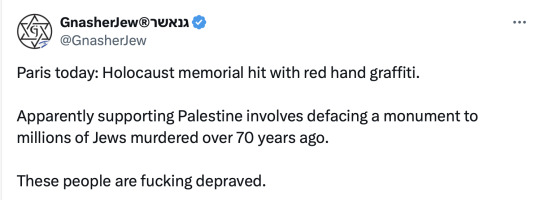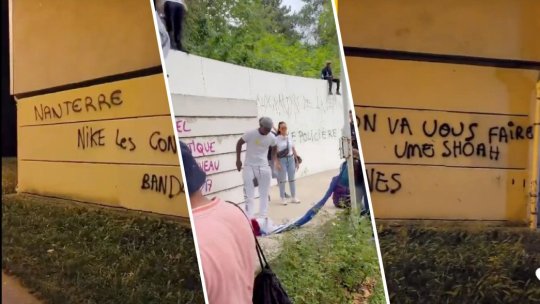#Holocaust memorial
Text

As we approach Holocaust Memorial Day tomorrow, I can't help but reflect on my family's own tragic history during that dark time.
Some survived and many others perished in the horrors of the Holocaust.
But from that darkness emerged a profound lesson: the importance of having a homeland, a place where we can proudly stand as a people, with our own army to defend us, and the importance of fighting anywhere against antisemites.
Today, as I see images of Holocaust survivors standing next to posters of Israelis taken hostage by Hamas, it strikes a deep chord within me. The parallels between past and present are undeniable.
These so called "protests", these acts of aggression, they're not about political disputes. They're attacks on our identity, on our existence.
You can't tell me that the chants of today aren't fueled by the same hatred that once fueled the Nazis.
We see through the veils of rhetoric; we know exactly who you are—the new Nazis of 2024.
But we will not be silent. We will not let history repeat itself. We stand strong, united, and determined. We remember the far and the recent past, not just to mourn, but to ensure it never happens again.
We honor the memory of those who perished by fighting against those who would seek to erase us.
Today, we remember, we mourn, and we vow: never again. Just watch us.
55 notes
·
View notes
Text



A new Holocaust memorial in Poland by the artist Janusz Marciniak is a subtle combination of land art and commemoration.
The memorial is located at the site of the destroyed Jewish cemetery in Oborniki Wielkopolskie, near Poznas, and uses large, rough stones to form a Star of David in the center of the site, which is now a wild, grassy meadow.
One of the stones was cut in half, with inscriptions on the polished sides.
One commemorates the Jewish community destroyed by the Nazis during the Holocaust and bears a verse from Psalm 103 (in Hebrew and Polish) and a text reading, in Polish: “There must be a place in our memory for the dead. By respecting this and other cemeteries, we bear witness to humanity, culture, and faith. Memory is the foundation of love, mutual understanding and the future.”
The second half of the stone bears a fragment of the poem “Łąka” (Meadow) by the Polish Jewish poet Bolesław Leśmian. In the poem, Marciniak says, “the meadow is a tribute to eternal love. This love that ‘will break and conquer everything’ – even death.”
The monument was a project of the Oborniki Wielkopolskie municipality and carried out in cooperation with the Poznan Jewish community, and with the approval of Poland’s chief rabbi and the Commission for Jewish Cemeteries.
Photo credits: Janusz Marciniak
Information via Jewish Heritage Europe
44 notes
·
View notes
Text
Britain’s new Labour government said on Wednesday it would build a Holocaust memorial and learning center next to the Houses of Parliament in London, committing to a longstanding pledge dogged by controversy.
So what? There is increasing pressure for the British government to reward Hamas by recognizing a Palestinian state. Great Britain is no longer a safe country for Jews. Not only will a Holocaust memorial will not change that, but it's sure to be repeatedly vandalized by Great Britain's growing legions of Jew haters.
25 notes
·
View notes
Text
Paris holocaust memorial vandalised.
I am not pro genocide. I am, however, AGAINST the harassment and abuse of innocent Jewish diaspora; the 'cancellation' of Jewish celebrities and the desecration of memorials to innocent men, women and children.

Despicable.
14 notes
·
View notes
Text


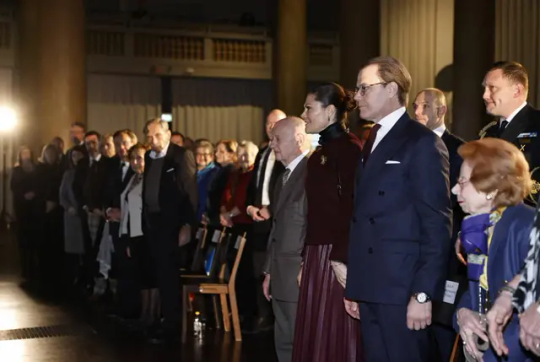
27th January 2024 // Crown Princess Victoria and Prince Daniel attended a memorial ceremony for Holocaust victims. The Crown Princess attends Holocaust Memorial Day events in Sweden every year and was the country's representative at the 70th and 75th anniversaries at Auschwitz.
#crown princess victoria#prince daniel#swedish royal family#2024#jan 2024#my upload#holocaust memorial
28 notes
·
View notes
Text
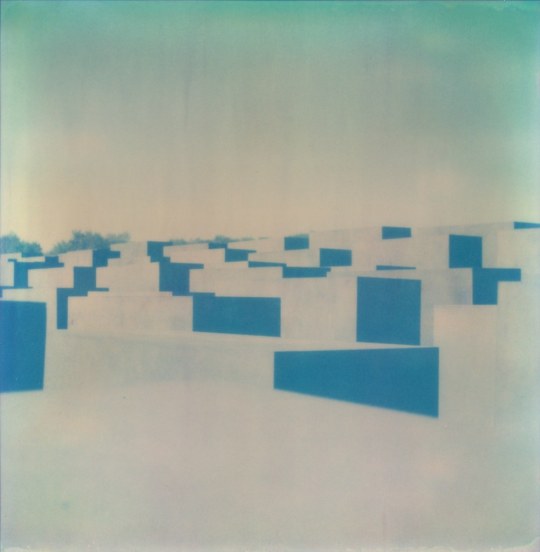
the sleeper and the dreamer
11 notes
·
View notes
Text
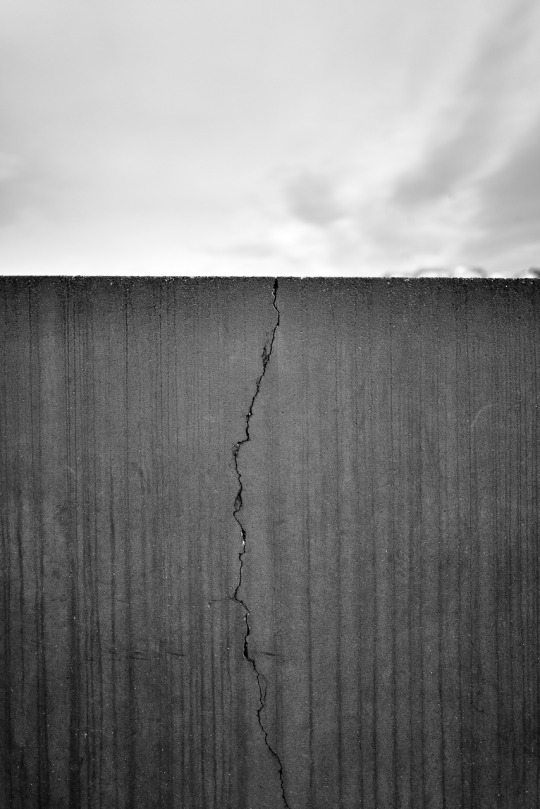
#original photography#photographers on tumblr#black and white#q2m#berlin#holocaust memorial#concrete
139 notes
·
View notes
Text
Anne Frank statue in Amsterdam defaced with 'Gaza' graffiti, mayor calls for public's assistance
🇪🇸 El 9 de julio de 2024, la estatua de Ana Frank en el parque Merwedeplein, en el barrio Rivierenbuurt de Ámsterdam, fue vandalizada con graffiti que decía "Gaza", lo que generó una condena generalizada de políticos holandeses. El concejal de Ámsterdam, Stijn Nijssen, calificó el acto como una vergüenza por usar el símbolo del Holocausto para promover la causa palestina. La alcaldesa Femke Halsema instó a los testigos a informar a la policía, y el Congreso Judío Europeo denunció el acto como antisemitismo y una falta de respeto hacia la memoria de Ana Frank y los seis millones de judíos asesinados durante el Holocausto. Este vandalismo se enmarca en un alarmante aumento de incidentes antisemitas en los Países Bajos, con un incremento del 245% en 2023 en comparación con el año anterior.


🇺🇸 On July 9, 2024, the statue of Anne Frank in Merwedeplein Park, Rivierenbuurt, Amsterdam, was vandalized with graffiti reading "Gaza," sparking widespread condemnation from Dutch politicians. Amsterdam councilor Stijn Nijssen described it as shameful to use the Holocaust memorial to promote the Palestinian cause. Mayor Femke Halsema called on witnesses to report the incident to the police, and the European Jewish Congress condemned the act as antisemitism and a disrespect to Anne Frank's memory and the six million Jews murdered in the Holocaust. This vandalism reflects a significant rise in antisemitic incidents in the Netherlands, which saw a 245% increase in 2023 compared to the previous year.
#judaísmo#judaism#jewish#cultura judía#jumblr#antisemitismo#antisemitism#Anne Frank#Holocaust Memorial#Antisemitism#Gaza Graffiti#Amsterdam#Vandalism#Jewish Community#Humanity#Memory Of The Holocaust#Nunca Más#No Al Antisemitismo#Rivierenbuurt#Dutch Politics#Femke Halsema#Stijn Nijssen#European Jewish Congress#CIDI#Anti Zionism#Hate Speech#Tolerance#Respect For History#Social Justice#Stand Against Antisemitism
2 notes
·
View notes
Text
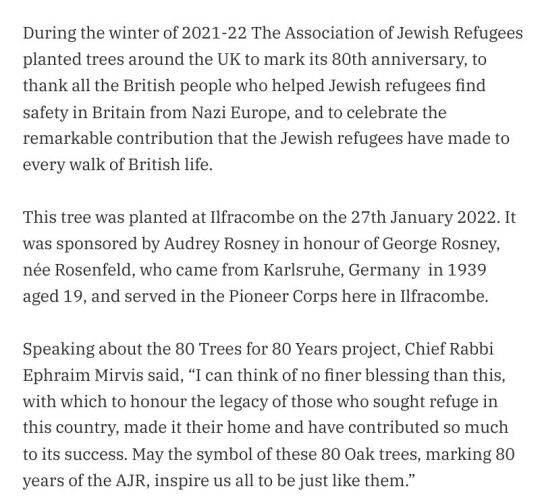

Not long after the war against Hamas started, the plaque for George Rosney was pulled up desecrated, ripped off its post and disappeared. The next day, the tree planted in his memory was snapped.
What did George Rosney do to Palestinians?
NOTHING.
Demonising Jewish people, in the guise of "anti Zionism" is never okay. You are not supporting Palestinians when you deface Jewish memorials. You are not supporting Palestinians when you rant against the very existence of Israel, the only liberal democracy in the Middle East. The only nation in the Middle East where LGBTQ people and Jewish people are not discriminated against simply for being who they can't help being. Where Palestinian LGBTQ people are able to seek refuge from persecution and honour killings by their own families and communities.
What is WRONG with you LGBTQ anti zionist MORONS?
People share and reblog and rant against Zionism, the right of the Jewish people to self determination in their historic homeland of Israel, without the slightest bit of awareness or care that they are spreading antisemitism and making people feel frightened.
They don't even know what Zionism means.
They don't even know what Islamism is, yet they seem very keen to support the very ideology that would murder them and their entire families. This is cognitive dissonance on another level.
It's never okay to desecrate memorials for Holocaust survivors. It's never okay to blame Jews for the terror attacks committed against them.
And it's just so much more distressing that desecration of Holocaust memorials always happens after Israel suffers a terror attack.
And then these so called "liberal, LGBTQ allies" wonder why diaspora Jews pack up in despair at how unsafe they feel, and move to Israel.
#stop antisemitism#i stand with israel#october 7th massacre#Holocaust memorial#stop hatred against jews#antizionism is antisemitism
5 notes
·
View notes
Text
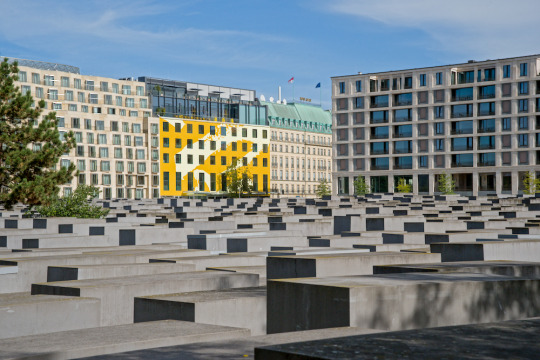
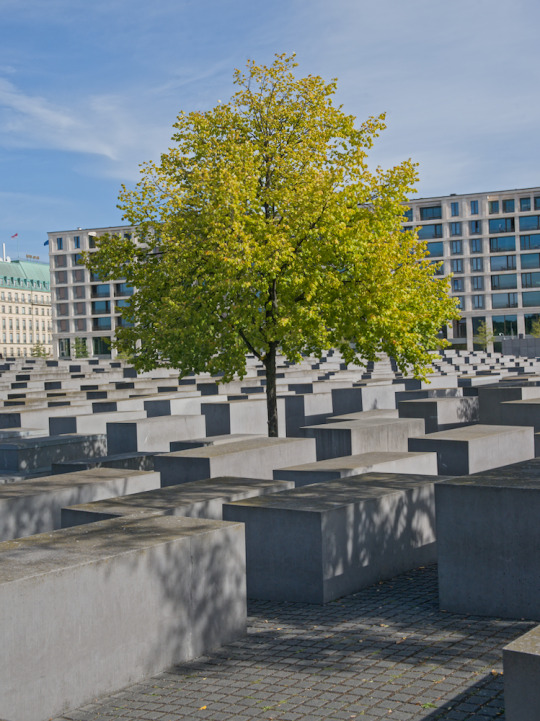


Jewish holocaust memorial, Berlin
#holocaust memorial#berlin#architecture#art#photography#germany#travel#memorial#original photographers#photographers on tumblr#lensblr#original photography#pws
5 notes
·
View notes
Text
Honoring International Holocaust Remembrance Day.
On a personal note, meet my family.
I never got to meet too many of them, because they were not lucky enough to make it out alive.
At the same time, I am here thanks to and because of the ones that were among the lucky ones. My dear grandmother in this picture with a blue dot next to her. Taking after her, we were both lucky enough to do what we love: Writing, travelling the world, and following our hearts creating our own destiny.
I see in this picture a portrayal of the fragility and triumph of our families, side by side.
For those who were taken and those who carry on #neverforget
#jewish hebrew jew israel education books learn israeli judaism#jewish#hebrew#learnhebrew#hebrewbyinbal#never forget#holocaust#international#remembrance#remember#jewish tumblr#memorial#holocaust memorial
46 notes
·
View notes
Text


Six million Jews murdered. Millions more stripped of their livelihoods, their communities, their families, even their names.
The horrors of the Holocaust are often expressed in numbers that convey the magnitude of Nazi Germany’s attempt to annihilate Europe’s Jews.
The Nazis and their collaborators killed millions of people whom they perceived as inferior—including Jehovah’s Witnesses, gay men, people with disabilities, Slavic and Roma people, and Communists.
However, historians use the term “Holocaust”—also called the Shoah, or “disaster” in Hebrew—to apply strictly to European Jews murdered by the Nazis between 1933 and 1945.
No single statistic can capture the true terror of the systematic killing of a group of human beings—and given its enormity and brutality, the Holocaust is difficult to understand.
How did a democratically elected politician incite an entire nation to genocide? Why did people allow it to happen in plain sight? And why do some still deny it ever happened?


European Jews before the Holocaust
By 1933, about nine million Jews lived across the continent and in every European nation.
Some countries guaranteed Jews equality under the law, which enabled them to become part of the dominant culture.
Others, especially in Eastern Europe, kept Jewish life strictly separate.
Jewish life was flourishing, yet Europe’s Jews also faced a long legacy of discrimination and scapegoating.
Pogroms—violent riots in which Christians terrorized Jews—were common throughout Eastern Europe.
Christians blamed Jews for the death of Jesus, fomented myths of a shadowy cabal that controlled world finances and politics, and claimed Jews brought disease and crime to their communities.
The rise of Adolf Hitler
It would take one man, Adolf Hitler, to turn centuries of casual anti-Semitism into genocide.
Hitler rose to power as leader of the National Socialist German Workers’ Party, also known as the Nazi Party, in the 1920s.
Hitler harnessed a tide of discontent and unrest in Germany, which was slowly rebuilding after losing the First World War.
The nation had collapsed politically and economically, and owed heavy sanctions under the Treaty of Versailles.
The Nazi party blamed Jews for Germany’s troubles and promised to restore the nation to its former glory.
Hitler was democratically elected to the German parliament in 1933, where he was soon appointed as chancellor, the nation’s second-highest position.
Less than a year later, Germany’s president died, and Hitler seized absolute control of the country.

The early Nazi regime
Immediately after coming to power, the Nazis promulgated a variety of laws aimed at excluding Jews from German life—defining Judaism in racial rather than religious terms.
Beginning with an act barring Jews from civil service, they culminated in laws forbidding Jews from German citizenship and intermarriage with non-Jews.
These were not just domestic affairs: Hitler wanted to expand his regime and, in 1939, Germany invaded Poland.
It marked the beginning of the Second World War—and the expansion of the Nazis’ anti-Jewish policies.
German officials swiftly forced hundreds of thousands of Polish Jews into crowded ghettoes, and with the help of locals and the German military, specially trained forces called the Einsatzgruppen began systematically shooting Jews and other people the regime deemed undesirable.
In just nine months, these mobile murder units shot more than half a million people in a “Holocaust by bullets” that would continue throughout the war.
But Hitler and his Nazi officials were not content with discriminatory laws or mass shootings.
By 1942, they agreed to pursue a “final solution” to the existence of European Jews:
They would send the continent’s remaining 11 million Jews east to death camps where they would be forced into labor and ultimately killed.
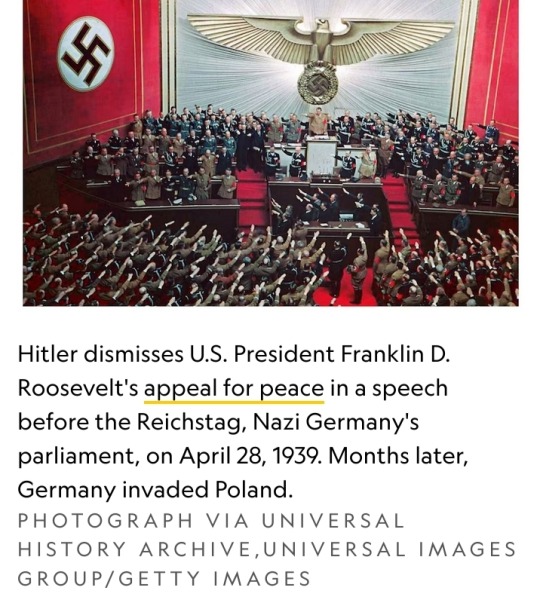
Genocide in plain sight
By characterizing their actions as the “evacuation” of Jews from territories that rightfully belonged to non-Jewish Germans, the Nazi operation took place in plain sight.
Though thousands of non-Jews rescued, hid, or otherwise helped those targeted by the Holocaust, many others stood by indifferently or collaborated with the Nazis.
With the help of local officials and sympathetic civilians, the Nazis rounded up Jews, stripped them of their personal possessions, and imprisoned them in more than 44,000 concentration camps and other incarceration sites across Europe.
Non-Jews were encouraged to betray their Jewish neighbors and move into the homes and businesses they left behind.
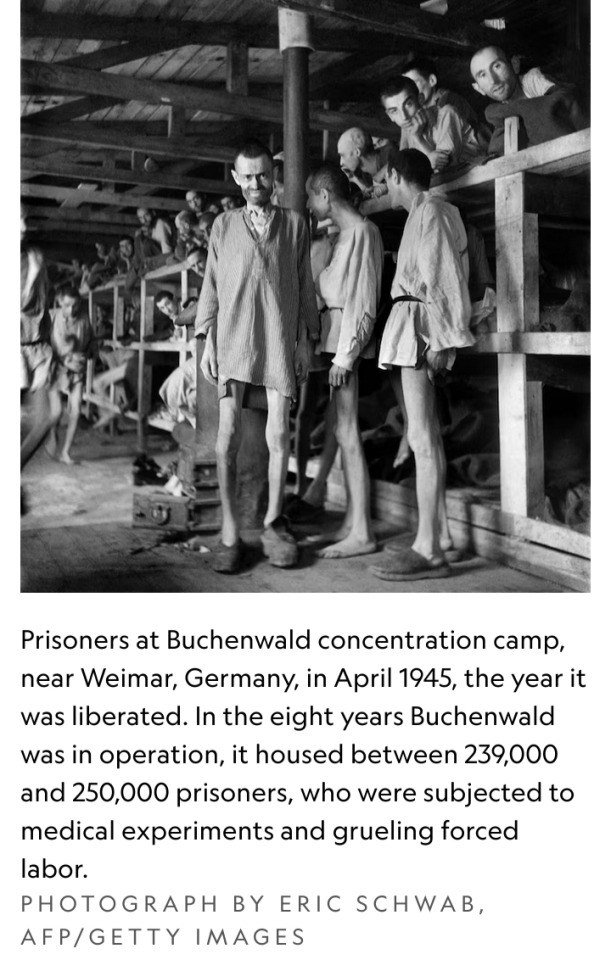
Dachau, which opened near Munich in 1933, was the first concentration camp.
Five others—Auschwitz-Birkenau, Chelmno, Belzec, Sobibor, and Treblinka—were designated as killing centers, where most Jews were immediately murdered upon arrival.
The killings took place in assembly-line fashion:
Mass transports of Jews were unloaded from train cars and “selected” into groups based on sex, age, and perceived fitness.
Those selected for murder were taken to holding areas where they were told to set aside their possessions and undress for “disinfection” or showers.
In reality, they were herded into specially designed killing chambers into which officials pumped lethal carbon monoxide gas or a hydrogen cyanide pesticide called Zyklon B that poisoned its victims within minutes.

Credit: Zyklon B (Wikipedia)
The earliest Holocaust victims were buried in mass graves. Later, in a bid to keep the killings a secret, corpses were burned in large crematoria.
Some Jews were forced to participate in the killings, and then were themselves executed to maintain secrecy.
The victims’ clothing, tooth fillings, possessions, and even hair was stolen by the Nazis.
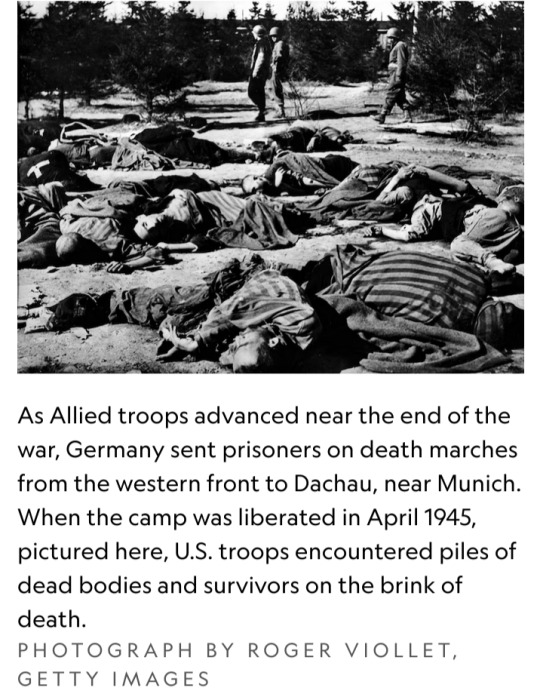
Life in the camps
Those not chosen for death were ritually humiliated and forced to live in squalid conditions.
Many were tattooed with identification numbers and shorn of their hair.
Starvation, overcrowding, overwork, and a lack of sanitation led to rampant disease and mass death in these facilities.
Torture tactics and brutal medical experiments made the camps a horror beyond description.
“It is not possible to sink lower than this; no human condition is more miserable than this, nor could it conceivably be so,” wrote Auschwitz survivor Primo Levi in his 1947 memoir.
“Nothing belongs to us any more…if we speak, they will not listen to us, and if they listen, they will not understand. They will even take away our name.”
But despite almost inconceivable hardships, some managed to resist.
“Our aim was to defy Hitler, to do everything we [could] to live,” recalled Majdanek and Auschwitz survivor Helen K. in a 1985 oral history. “He [wanted] us to die, and we didn’t want to oblige him.”
Jews resisted the Holocaust in a variety of ways, from going into hiding to sabotaging camp operations or participating in armed uprisings in ghettoes and concentration camps.
Other forms of resistance were quieter, like stealing food, conducting forbidden religious services, or simply attempting to maintain a sense of dignity.

The aftermath of the Holocaust
As World War II drew to a close in 1944 and 1945, the Nazis attempted to cover up their crimes, burning documents, dismantling death camp sites, and forcing their remaining prisoners on brutal death marches to escape the advancing Allies.
They didn’t succeed: As they liberated swaths of Europe, Allied troops entered camps piled high with corpses and filled, in some cases, with starving, sick victims.
The evidence collected in these camps would become the basis of the Nuremberg Trials, the first-ever international war crimes tribunal.
In the war’s aftermath, the toll of the Holocaust slowly became clear.
Just one out of every three European Jews survived, and though estimates vary, historians believe at least six million Jews were murdered.
Among them were an estimated 1.3 million massacred by the Einsatzgruppen; approximately a million were murdered at Auschwitz-Birkenau alone.
Many survivors had nowhere to go. Poland had Europe’s largest Jewish population before the war but lost 93 percent of that population in just five years.
Entire villages and communities were wiped out and families scattered across Europe.
Labeled “displaced persons,” survivors attempted to rebuild their lives. Many left Europe for good, emigrating to Israel, the United States, or elsewhere.
Holocaust denial
Despite the enormity of evidence, some people sowed misinformation about the Holocaust, while others denied it happened at all.
Holocaust denial persists to this day, even though it is considered a form of antisemitism and is banned in a variety of countries.
How to counter the hate? "Educating about the history of the genocide of the Jewish people and other Nazi crimes offers a robust defence against denial and distortion," concluded the authors of a 2021 United Nations report on Holocaust denial.
Though the number of Holocaust survivors has dwindled, their testimonies offer crucial evidence of the Holocaust’s horrors.
“The voices of the victims—their lack of understanding, their despair, their powerful eloquence or their helpless clumsiness—these can shake our well-protected representation of events,” said Saul Friedländer, a historian who survived the Holocaust and whose parents were murdered at Auschwitz, in a 2007 interview with Dissent Magazine.
“They can stop us in our tracks. They can restore our initial sense of disbelief, before knowledge rushes in to smother it.”
#Holocaust#Nazi#European Jews#Jews#Shoah#World War II#concentration camps#genocide#Germany#Poland#Europe#Allied Forces#Nazi Party#National Socialist German Workers’ Party#Austria#Holocaust Memorial#Memorial to the Murdered Jews of Europe#Nuremberg Trials#Holocaust Memorial Day 2023
13 notes
·
View notes
Photo

To learn more visit: https://www.ushmm.org/remember/international-holocaust-remembrance-day
7 notes
·
View notes
Text
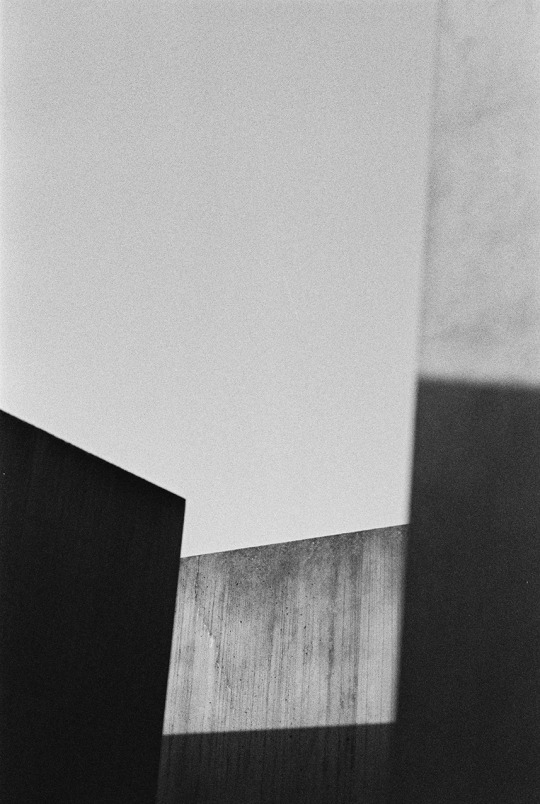
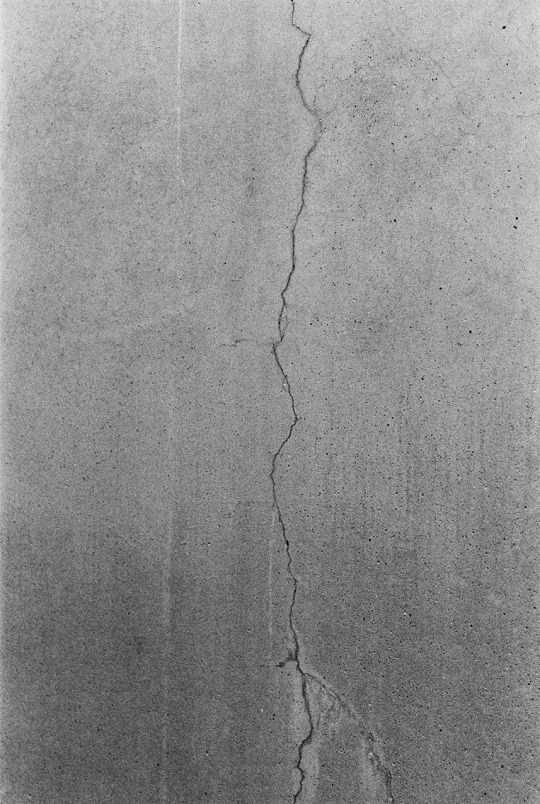


The Memorial to the Murdered Jews of Europe (German: Denkmal für die ermordeten Juden Europas), also known as the Holocaust Memorial (German: Holocaust-Mahnmal) in Berlin
#photography#inigo de amescua#inigo amescua#street photography#street#berlin#germany#travel photography#travel#traveller#travels#Memorial#Holocaust Memorial#jewish history#history#black&white#black and white photography#analog#analog photography#film photography#film#filmcamera#35mm#35mmclub#photo series
2 notes
·
View notes
